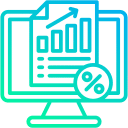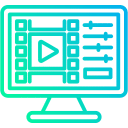The Impact of Onboarding on Employee Success and Business Performance
Effective onboarding is a key foundation for employee success and overall business excellence. When new hires are welcomed through comprehensive and well-structured training, they quickly acquire the knowledge, skills, and confidence needed to make meaningful contributions from day one. This smooth transition not only shortens ramp-up time but also enhances employee engagement, boosts retention, and increases productivity.
According to research by the Society for Human Resource Management (SHRM), a structured onboarding program can improve new employee retention by approximately 25% and elevate productivity by up to 11% (SHRM, 2021). These advantages directly benefit a company’s bottom line, emphasizing the strategic importance of optimized onboarding processes.
At the heart of successful onboarding is the deployment of advanced training software. The right tools streamline content delivery, facilitate personalized learning paths, and provide ongoing support, enabling new hires to assimilate organizational culture and expectations effortlessly. Incorporating cutting-edge training technologies also allows for scalability, consistency, and data-driven insights, empowering HR teams to refine onboarding strategies continuously.
This guide aims to shed light on how onboarding directly influences employee achievement and business results. It highlights how selecting the appropriate training software can drive organizational growth by fostering a motivated, skilled workforce committed to long-term success.
Essential Features to Evaluate When Choosing Onboarding Tools
Selecting the right onboarding platform is crucial for effective new employee integration and overall HR efficiency. To make an informed decision, organizations should consider key features that address their unique needs. Here are the most important features to evaluate:
- User-Friendly Interfaces: An intuitive, easy-to-navigate platform reduces confusion and speeds up onboarding adoption for both HR and new hires. Platforms like Paradiso LMS, BambooHR and Workday exemplify user-centric design that simplifies complex workflows.
- Customization Options: Every organization has distinct onboarding requirements. Look for tools that allow customizing workflows, checklists, and branding to align with your company culture and policies, creating a more engaging experience.
- Automation Capabilities: Automation minimizes manual tasks through features like auto-assignments, reminders, document management, and progress tracking. This boosts efficiency and reduces the risk of errors.
- Integration Capabilities: Seamless integration with existing HRIS, payroll, and communication tools ensures data consistency, streamlines workflows, and prevents duplication. Solutions such as SAP SuccessFactors and Oracle HCM excel in this area.
- Mobile Access: A mobile-friendly platform allows new hires to complete paperwork, access training, and communicate from smartphones or tablets, ensuring a smooth onboarding process regardless of location.
- Scalability: As your organization grows, onboarding tools should expand seamlessly. Cloud-based solutions like Gusto and Zenefits are designed to scale with your needs without sacrificing performance.
- Customer Support: Reliable support from vendors—via chat, phone, or email—along with helpful resources like tutorials and FAQs, minimizes downtime and enhances user satisfaction.
By focusing on these features, organizations can select onboarding tools that streamline workflows, create positive experiences for new employees, and lay a strong foundation for long-term retention and engagement.
Overview of Leading Onboarding Platforms: Features, Pricing, and Review Insights
Effective onboarding platforms are vital for helping new employees seamlessly integrate, boosting engagement, productivity, and retention. In this section, we review some of the leading onboarding tools, exploring their core features, pricing models, and customer feedback to guide organizations in choosing solutions suited to their size and needs.
Popular Onboarding Platforms: An Overview
Many onboarding solutions have gained prominence through their robust features, scalability, and intuitive interfaces. Below is a summary of some top platforms, including their strengths and potential limitations.
1. Paradiso LMS
Features: Paradiso LMS offers a built-in onboarding module with automated learning paths, role-based course assignments, progress tracking, compliance tracking, gamification elements, and social learning features to engage new hires. It integrates with HRMS, payroll, and CRM systems for seamless data sync, allowing onboarding to extend into ongoing learning and performance tracking.
Pricing: Typically It’s depending on organization size, onboarding complexity, and required integrations. Custom pricing is available for advanced compliance and reporting needs.
Customer Feedback: Users appreciate Paradiso LMS for its ease of use, multi-language support, and blended learning capabilities during onboarding. Some customers mention the reporting interface requires an initial learning curve to fully utilize advanced tracking features.
Pros:
✅ Mobile-friendly, intuitive UI for new hires
✅ Advanced gamification and social learning for engagement
✅ SCORM/xAPI/AICC support for onboarding content
✅ Integrations with major HRMS and CRM platforms
Cons:
⚠️ Some advanced reporting requires training to set up optimally
⚠️ Extensive customization may require initial implementation support
🚀 Ready to See Paradiso LMS in Action?
Let’s show you how Paradiso LMS can work for you.
2. BambooHR Onboarding
Features: Integrates seamlessly with BambooHR’s HR management system, offering automated document handling, task tracking, customizable checklists, electronic signatures, and integrations with payroll and benefits systems.
Pricing: Starts around $6-8 per employee/month; precise costs depend on organization size and selected features.
Customer Feedback: Users praise its intuitive interface and comprehensive onboarding features; some note that higher customization may require technical support.
Pros: Easy-to-use design, robust integration options, automated workflows.
Cons: Cost may be high for small teams; limited automation outside HR-related processes.
3. Workday Onboarding
Features: Offers a unified HR platform with recruitment, onboarding, talent management, and strong analytics. Supports compliance tracking and secure document management, with mobile app support for remote onboarding.
Pricing: Tailored for enterprise clients; pricing varies, making it less suitable for small businesses.
Customer Feedback: Valued for its comprehensive HR suite and analytics; some find the interface complex and have a steep learning curve.
Pros: Integrated talent management, real-time data insights, mobile accessibility.
Cons: Higher cost and longer implementation time; complexity may overwhelm smaller HR teams.
4. Sapling HR
Features: Focuses on onboarding automation and employee lifecycle management. Includes customizable workflows, messaging tools, and integrations with Slack, G Suite, and HRIS systems.
Pricing: Available upon request; suitable for mid-sized organizations with scalable plans.
Customer Feedback: Highlights flexibility and automation; some mention integration challenges with legacy systems.
Pros: Highly customizable workflows, strong automation, good integrations.
Cons: Learning curve for complex features; pricing can be high for smaller firms.
5. ClearCompany Onboarding
Features: Part of a Talent Management suite, emphasizing collaborative workflows, document handling, and task management.
Pricing: Custom quotes based on company size; targets mid-market firms.
Customer Feedback: Positive on collaboration and ease of use; some note limited customization options.
Pros: Collaborative processes, integrated talent modules, user-friendly interface.
Cons: Limited customization; may be costly for startups.
Assessing Fit for Your Business
When selecting an onboarding platform, consider your organization’s size, industry compliance needs, budget, and desired automation level. Small businesses may prefer affordable options like Paradiso LMS, while larger enterprises benefit from comprehensive solutions such as Workday. Mid-sized organizations often choose Sapling or ClearCompany for a balanced mix of features and customization.
Remember, aligning platform strengths with organizational goals is essential. As your organization evolves, flexibility and integration become increasingly critical factors.
Identifying Your Onboarding Needs and Establishing Success Metrics
Effective onboarding ensures new employees integrate smoothly and become productive quickly. To achieve this, start by assessing your organization’s specific needs, selecting appropriate tools, and establishing clear key performance indicators (KPIs) to measure success.
Assessing Your Onboarding Needs
Every organization faces unique challenges and goals. Begin with a thorough analysis of current processes to identify gaps and improvement opportunities. Consider factors such as:
- Compliance Training: Meeting industry regulations and internal policies.
- Skill Development: Role-specific onboarding and training.
- Cultural Integration: Introducing company values and culture.
- Technology Adoption: Access to tools and resources.
Engaging HR, managers, and new hires provides comprehensive insights—for example, a tech startup emphasizes rapid technical onboarding, while a healthcare organization focuses on strict compliance protocols.
Choosing Software to Support Your Onboarding
With needs identified, select software that supports your objectives. Key features include:
- Customization: Tailored onboarding pathways for roles and departments.
- User Engagement: Interactive content, videos, and assessments.
- Automation: Repetitive task automation, progress tracking.
- Integration: Compatibility with HR systems, payroll, learning platforms.
A suitable onboarding platform simplifies processes, reduces administrative load, enhances the experience, and accelerates employee productivity.
Establishing KPIs for Success
Track the effectiveness of onboarding initiatives through both quantitative and qualitative measures, such as:
- Time-to-Productivity: Duration until employees reach expected performance levels.
- Completion Rates: Percentage of onboarding modules completed timely.
- Engagement Scores: Feedback on onboarding satisfaction and engagement.
- Retention Rates: Employee retention after 90 days and six months.
- Knowledge Retention: Post-training assessment scores.
Regular monitoring allows continuous improvement and demonstrates onboarding ROI. For example, a tech firm improved time-to-competency from 60 to 45 days, boosting productivity, while a healthcare company increased retention by 15% using targeted KPI tracking.
Platforms like Paradiso LMS provide customizable onboarding pathways, automation, and advanced analytics to measure effectiveness and optimize the process.
Introducing Paradiso LMS: Empowering Seamless Onboarding through Innovative Features
Paradiso LMS is a versatile learning management system designed to enhance onboarding efficiency. Its core features—automation, content management, tracking, and seamless integrations—are tailored to help organizations onboard effectively, reduce time-to-productivity, and improve learning outcomes.
Automation: Paradiso LMS automates workflows, such as assigning onboarding courses, sending reminders, and tracking completions, reducing manual administrative tasks and delays.
Content Management: The platform centralizes onboarding materials, enabling easy upload, organization, and customization of videos, PDFs, quizzes, and interactive modules, making onboarding engaging and role-specific.
Tracking and Reporting: Real-time dashboards monitor individual progress and engagement, support compliance, and assist in continuous program improvement.
Integration: Compatible with HRIS, CRM, and communication tools like Slack and Microsoft Teams, Paradiso LMS ensures smooth data synchronization and streamlined workflows.
Many organizations leverage Paradiso LMS to automate onboarding across multiple locations or ensure mandatory compliance training, resulting in faster onboarding and higher engagement scores. For example, a global tech firm reduced onboarding time by 30%, while a healthcare provider maintained accreditation standards through timely training completions.
Summary and Next Steps for Selecting Onboarding Software
Choosing the right onboarding software is vital to welcoming new employees effectively, informing them thoroughly, and engaging them from first day. This guide reviewed critical factors—usability, customization, integration, scalability, and support—that influence success. Selecting reliable and flexible platforms helps reduce ramp-up time, improve retention, and foster a positive onboarding experience. Partnering with a trusted technology provider like Scalo can further enhance the onboarding process by delivering tailored software solutions that align with your organization’s specific needs and goals.
Key Points Recap for Picking Effective Onboarding Solutions
- Understand Organizational Needs: Clearly define onboarding goals aligned with your business strategy, such as compliance or cultural integration.
- Prioritize User Experience: Seek intuitive, mobile-friendly platforms to maximize engagement across locations and devices.
- Review Integration & Scalability: Ensure compatibility with existing HR systems and that the platform can grow with your organization.
- Support & Training: Choose providers offering comprehensive support, ongoing training, and platform updates.
- Cost & ROI: Balance investment against benefits like faster onboarding, improved retention, and compliance adherence.
Actionable Next Steps
- Define Objectives: Clarify what success looks like for your onboarding process.
- Research & Shortlist: Compare platforms based on features, reviews, and references.
- Request Demos & Trials: Test platforms firsthand to evaluate usability and fit.
- Plan Deployment: Develop phased rollout strategies, including data migration and training.
- Leverage Support Resources: Utilize vendor-provided training and onboarding assistance for smooth adoption.
Platforms like Paradiso LMS exemplify a comprehensive solution, offering customizable onboarding pathways, automation, and deep analytics—helping your organization realize efficient, engaging onboarding from start to finish. To experience the benefits firsthand, schedule a demo or start a free trial today and see how our platform can elevate your onboarding process.












